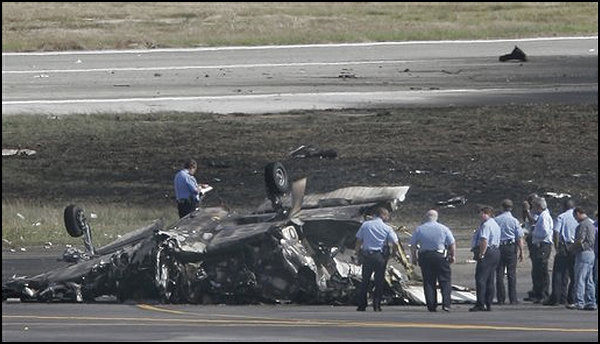Country
Crash of a Cessna 500 Citation in Derby: 2 killed
Date & Time:
Oct 18, 2013 at 1017 LT
Registration:
N610ED
Survivors:
No
Schedule:
Wichita - New Braunfels
MSN:
500-0241
YOM:
1975
Crew on board:
1
Crew fatalities:
Pax on board:
1
Pax fatalities:
Other fatalities:
Total fatalities:
2
Captain / Total hours on type:
1172.00
Aircraft flight hours:
7560
Circumstances:
After climbing to and leveling at 15,000 feet, the airplane departed controlled flight, descended rapidly in a nose-down vertical dive, and impacted terrain; an explosion and postaccident fire occurred. Evidence at the accident site revealed that most of the wreckage was located in or near a single impact crater; however, the outer portion of the left wing impacted the ground about 1/2 mile from the main wreckage. Following the previous flight, the pilot reported to a maintenance person in another state that he had several malfunctioning flight instruments, including the autopilot, the horizontal situation indicator, and the artificial horizon gyros. The pilot, who was not a mechanic, had maintenance personnel replace the right side artificial horizon gyro but did not have any other maintenance performed at that time. The pilot was approved under an FAA exemption to operate the airplane as a single pilot; however, the exemption required that all equipment must be operational, including a fully functioning autopilot, flight director, and gyroscopic flight instruments. Despite the malfunctioning instruments, the pilot chose to take off and fly in instrument meteorological conditions. At the time of the loss of control, the airplane had just entered an area with supercooled large water droplets and severe icing, which would have affected the airplane's flying characteristics. At the same time, the air traffic controller provided the pilot with a radio frequency change, a change in assigned altitude, and a slight routing change. It is likely that these instructions increased the pilot's workload as the airplane began to rapidly accumulate structural icing. Because of the malfunctioning instruments, it is likely that the pilot became disoriented while attempting to maneuver and maintain control of the airplane as the ice accumulated, which led to a loss of control.
Probable cause:
The airplane's encounter with severe icing conditions, which resulted in structural icing, and the pilot's increased workload and subsequent disorientation while maneuvering in instrument flight rules (IFR) conditions with malfunctioning flight instruments, which led to the subsequent loss of airplane control. Contributing to the accident was the pilot's decision to takeoff in IFR conditions and fly a single-pilot operation without a functioning autopilot and with malfunctioning flight instruments.
Final Report:
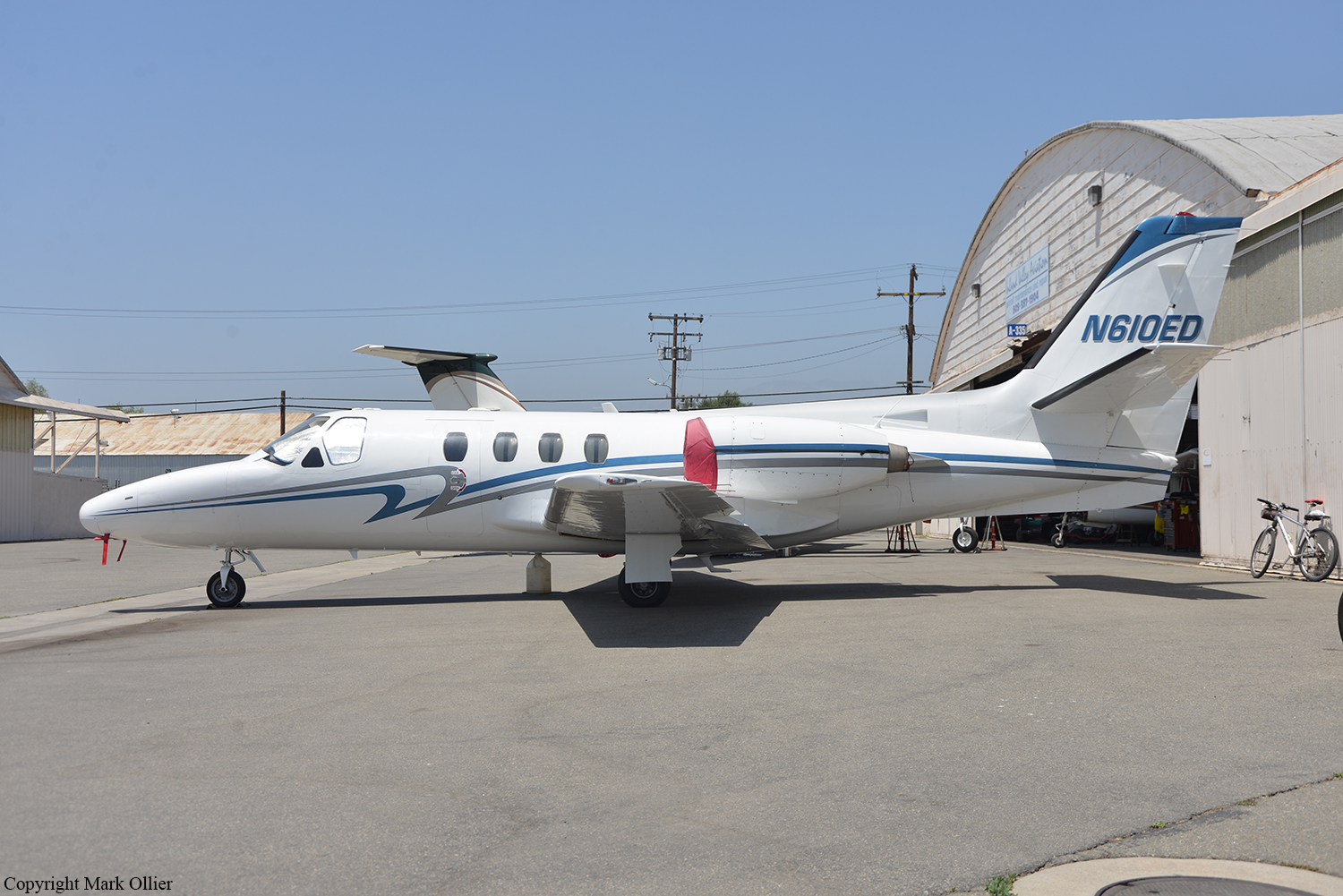
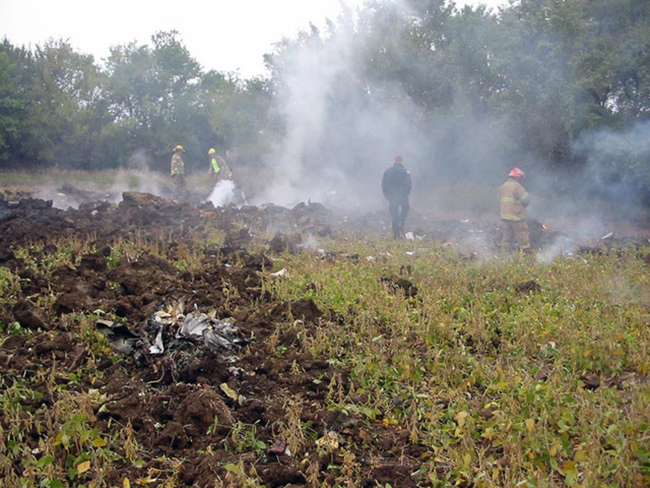
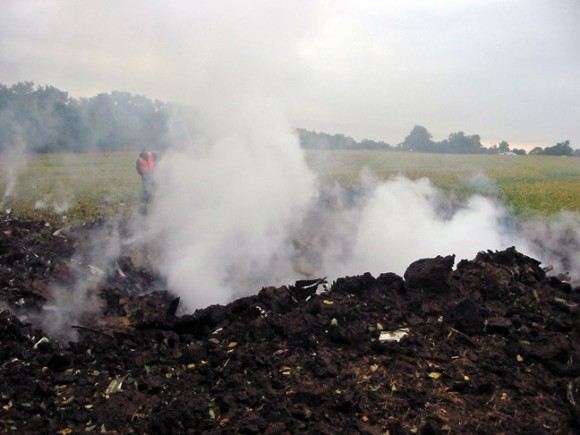
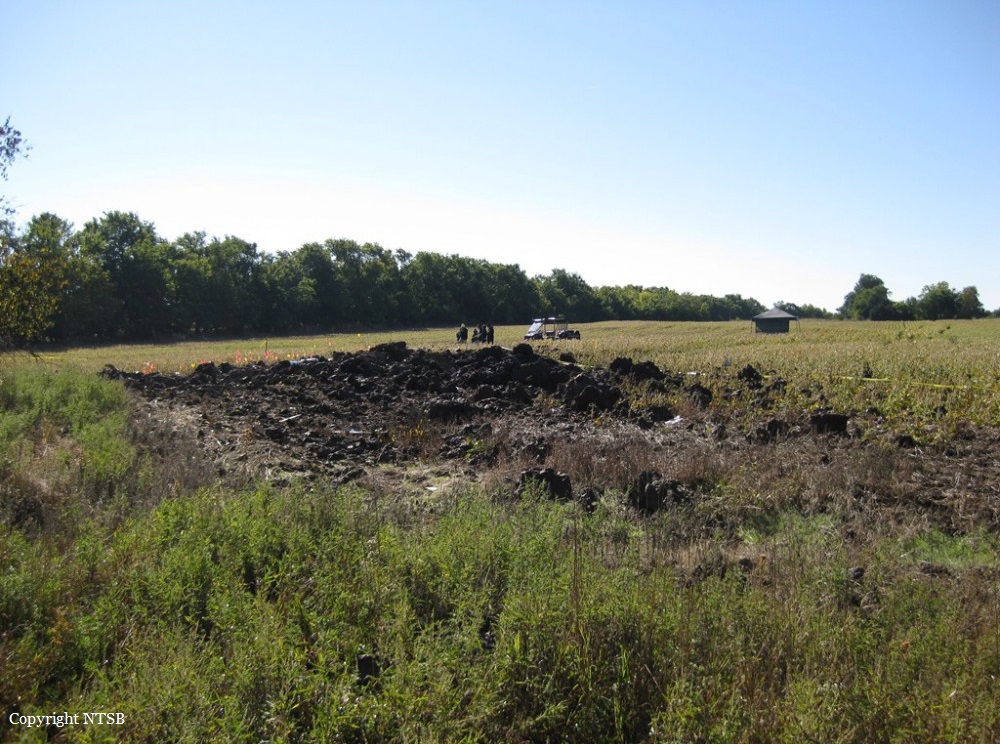
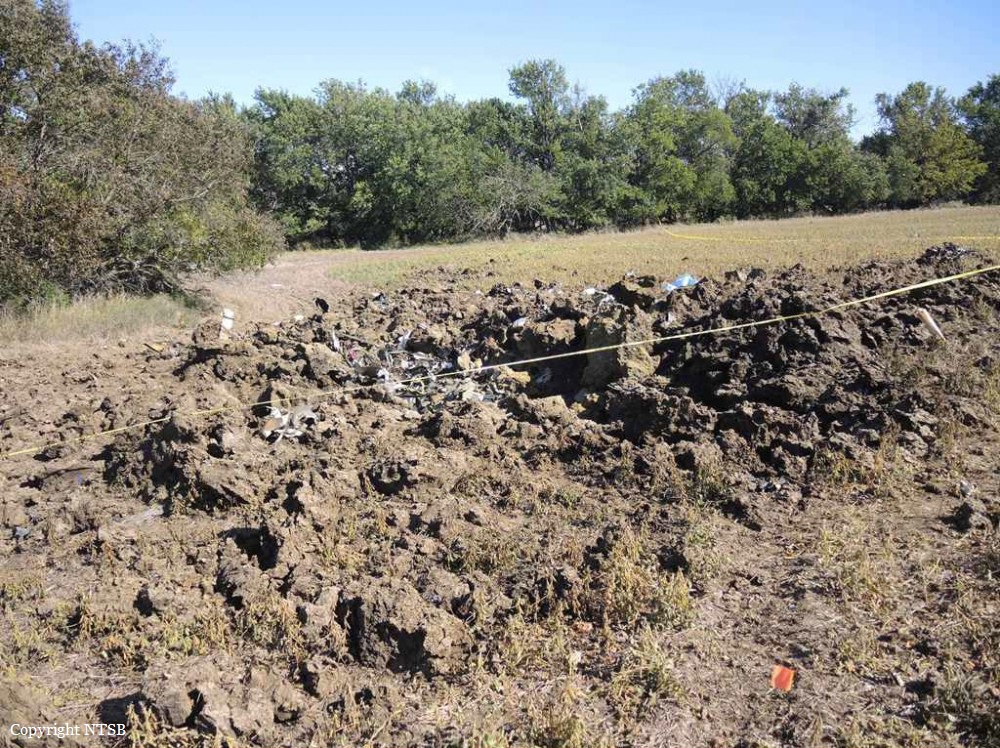
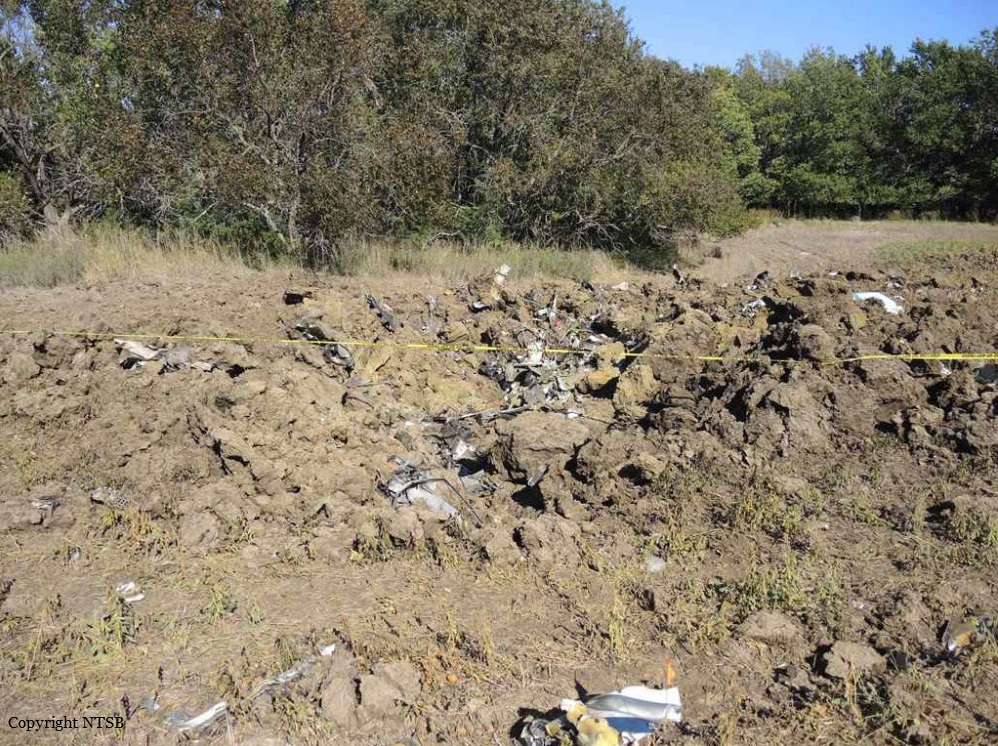
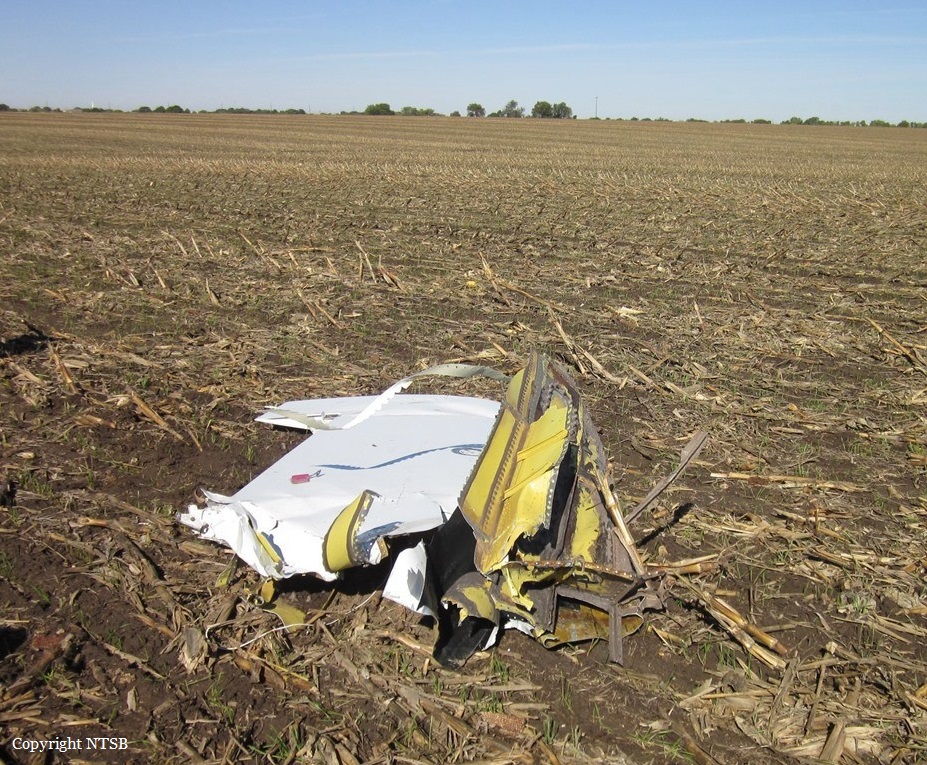
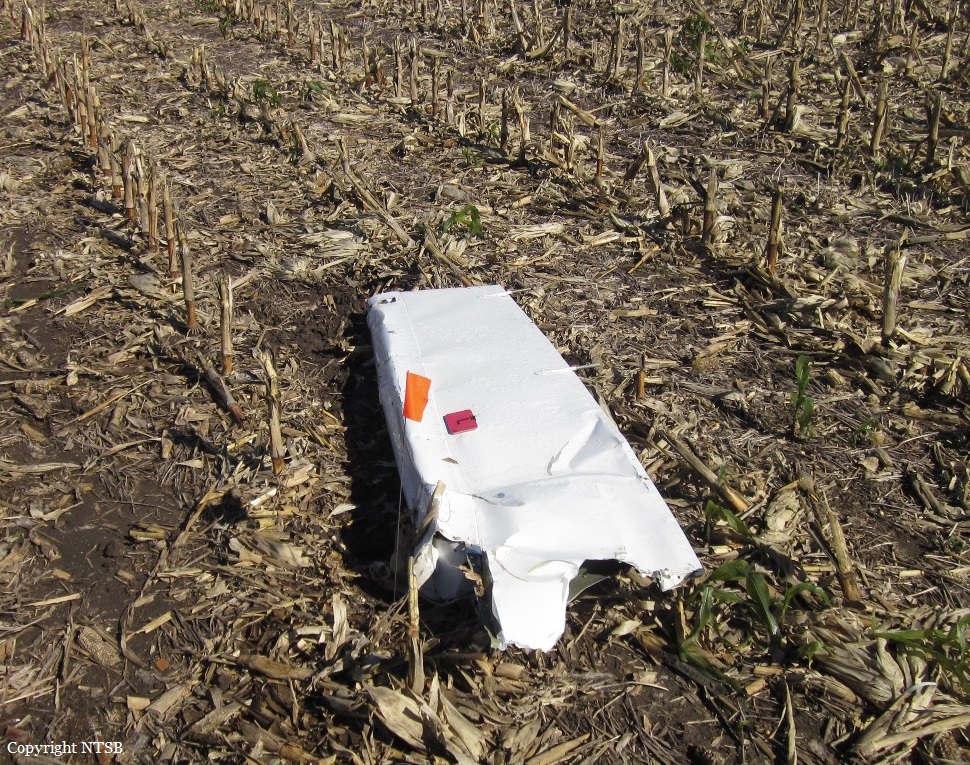
Crash of a Cessna 500 Citation I in Santiago de Compostela: 2 killed
Date & Time:
Aug 2, 2012 at 0618 LT
Registration:
EC-IBA
Survivors:
No
Schedule:
Oviedo - Santiago de Compostella
MSN:
500-0178
YOM:
1974
Crew on board:
2
Crew fatalities:
Pax on board:
0
Pax fatalities:
Other fatalities:
Total fatalities:
2
Captain / Total hours on type:
500.00
Copilot / Total hours on type:
412
Aircraft flight hours:
9460
Circumstances:
Based on the information available, at 20:40 the ONT (National Transplant Organization) informed the Santiago Airport (LEST) that they were going to make a “hospital flight”. The aircraft was refueled at the Santiago Airport with 1062 liters of fuel. According to communications, the crew of aircraft EC-IBA contacted the Santiago tower at 21:46 to request permission to start up and information on the weather and the runway in use at Asturias. At 21:54 they were cleared to take off. According to the airport operations office, the aircraft landed in Asturias (LEAS) at 22:27. The hospital flight service commenced at 22:15. The RFFS accompanied the ambulance to the aircraft at 22:30 and at 22:44 the aircraft took off en route to Porto. The aircraft was transferred from Madrid control to Santiago approach at 22:52 at flight level 200 and cleared straight to Porto (LPPR). Based on the information provided by Porto Airport, the aircraft landed at 23:40. While waiting for the medical team to return, the crew remained in the airport’s facilities. According to some of the personnel there, the crew made some comments regarding the bad weather. There was fog, especially on the arrival route. At 01:34 and again at 02:01 the crew was supplied with the flight plan information, information from the ARO-LPPR office and updated weather data. The aircraft was refueled at the Porto Airport with 1,000 l of fuel and took off at 02:34. At 02:44 the aircraft contacted approach control at Santiago to report its position. Four minutes later the crew contacted the Santiago tower directly to ask about the weather conditions at the field (see Appendix C). The aircraft landed once more in Asturias at 03:28. At 03:26 the RFFS was again activated to escort the ambulance to the aircraft. The service was deactivated at 04:00. The crew requested updated weather information from the tower, which provided the information from the 03:00 METAR. According to the flight plan filed, the estimated off-block time (EOBT) for departing from the Asturias Airport was 03:45, with an estimated flight time to Santiago of 40 minutes. The alternate destination airport was Vitoria (LEVT). The aircraft took off from Asturias at 03:38. At 03:56 the crew established contact with Santiago approach control, which provided the crew with the latest METAR from 03:30, which informed that the runway in use was 17, winds were calm, visibility was 4,000 m with mist, few clouds at 600 ft, temperature and dew point of 13° and QNH of 1,019. The aircraft was then cleared to conduct an ILS approach to runway 17 at the Santiago Airport. At 04:15 the crew contacted the tower controller, who reported calm winds and cleared them to land on runway 17. At 04:18 the COSPAS-SARSAT system detected the activation of an ELT. The system estimated the position for the beacon as being in the vicinity of the LEST airport. At 04:38 the tower controller informed airport operations of a call he had received from SAR that a beacon was active in the vicinity of the airport, and requested that a marshaller go to the airport where the airplane normally parked to see if it was there. At 04:44 the marshaller confirmed that the aircraft was not in its hangar and the emergency procedure was activated, with the various parties involved in the search for the airplane being notified. At 05:10 the control tower called the airport to initiate the preliminary phase (Phase I) before activating the LVP. At 05:15 the RFFS reported that the aircraft had been found in the vicinity of the VOR. At 05:30 the LVP was initiated (Phase II). At 07:51 the LVP was terminated. The last flight to arrive at the Santiago Airport before the accident had landed at 23:33, and the next flight to arrive following the accident landed at 05:25.
Probable cause:
The ultimate cause of the accident could not be determined. In light of the hypothesis considered in the analysis, the most likely scenario is that the crew made a non-standard precision approach in manual based primarily on distances. The ILS frequency set incorrectly in the first officer’s equipment and the faulty position indicated on the DME switch would have resulted in the distance being shown on the captain’s HSI as corresponding to the VOR and not to the runway threshold. The crew shortened the approach maneuver and proceeded to a point by which the aircraft should already have been established on the localizer, thus increasing the crew’s workload. The crew then probably lost visual contact with the ground when the aircraft entered a fog bank in the valleys near the airport and did not realize they were making an approach to the VOR and not to the runway.
The contributing factors were:
- The lack of operational procedures of an aircraft authorized to be operated by a single pilot operated by a crew with two members.
- The overall condition of the aircraft and the instruments and the crew’s mistrust of the onboard instruments.
- The fatigue built up over the course of working at a time when they should have been sleeping after an unplanned duty period.
- The concern with having to divert to the alternate without sufficient fuel combined with the complacency arising from finally reaching their destination.
The contributing factors were:
- The lack of operational procedures of an aircraft authorized to be operated by a single pilot operated by a crew with two members.
- The overall condition of the aircraft and the instruments and the crew’s mistrust of the onboard instruments.
- The fatigue built up over the course of working at a time when they should have been sleeping after an unplanned duty period.
- The concern with having to divert to the alternate without sufficient fuel combined with the complacency arising from finally reaching their destination.
Final Report:
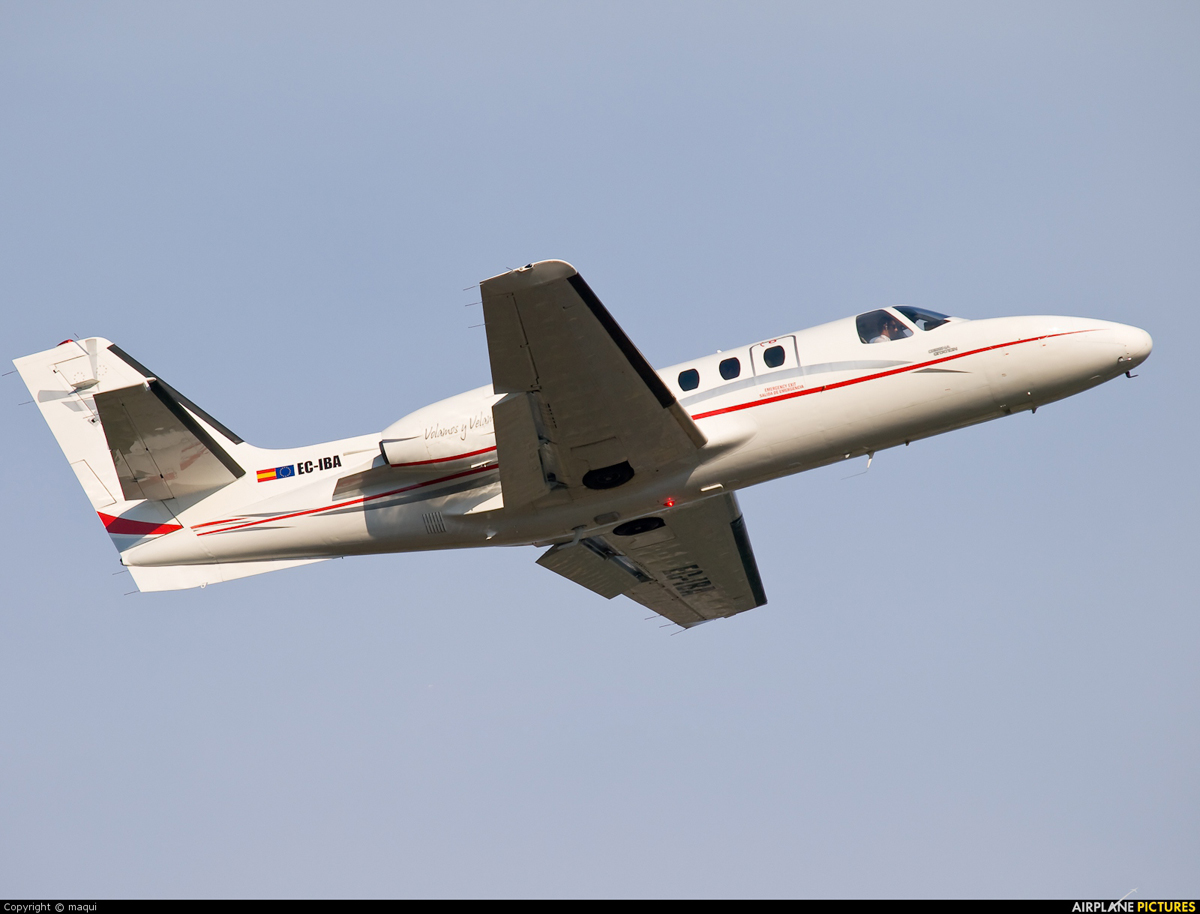
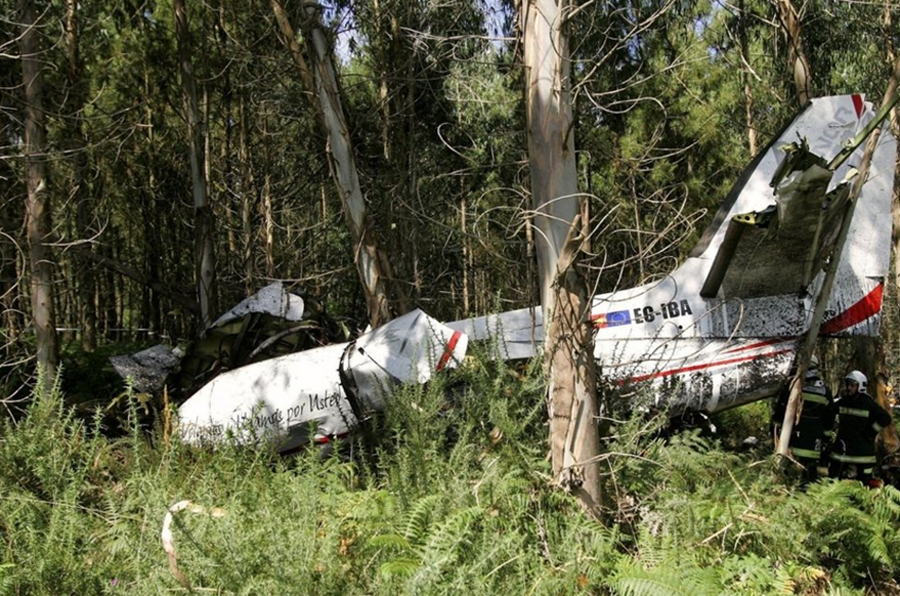
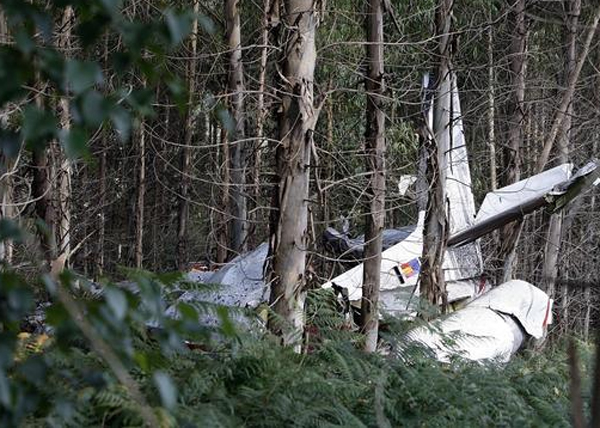

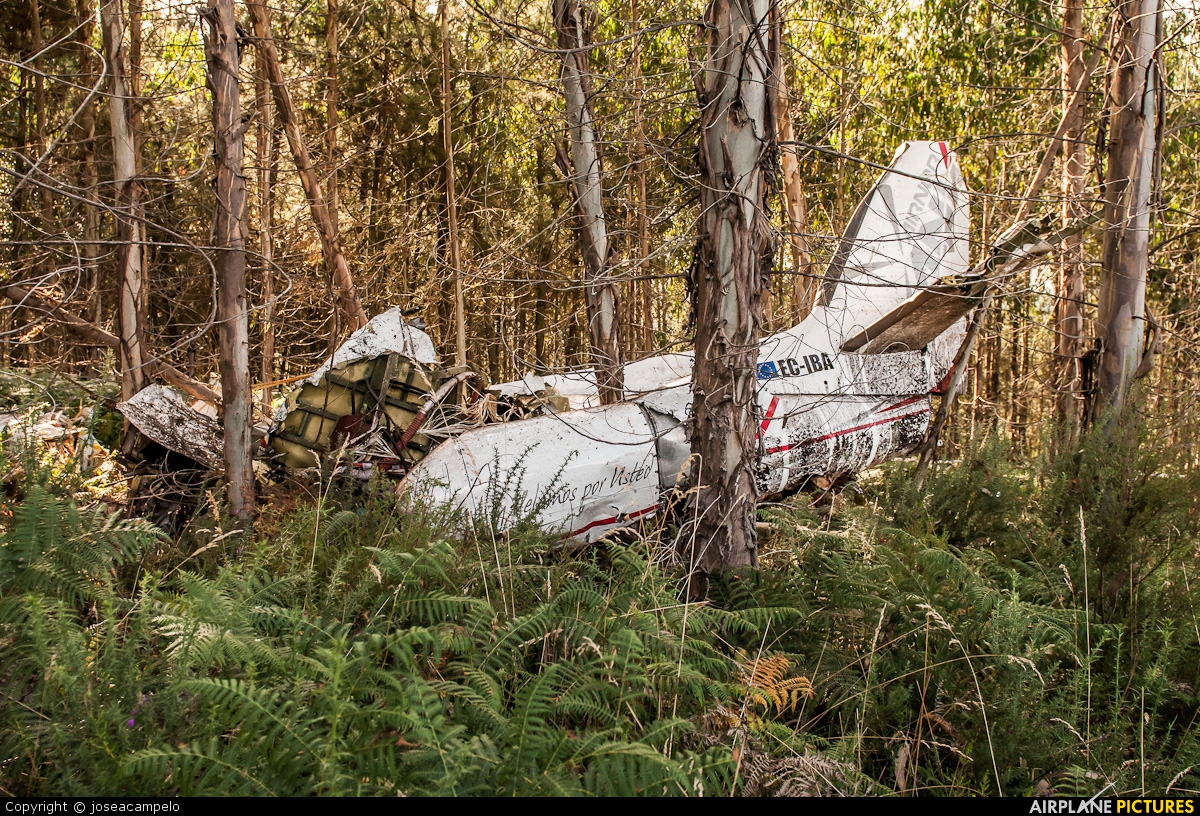
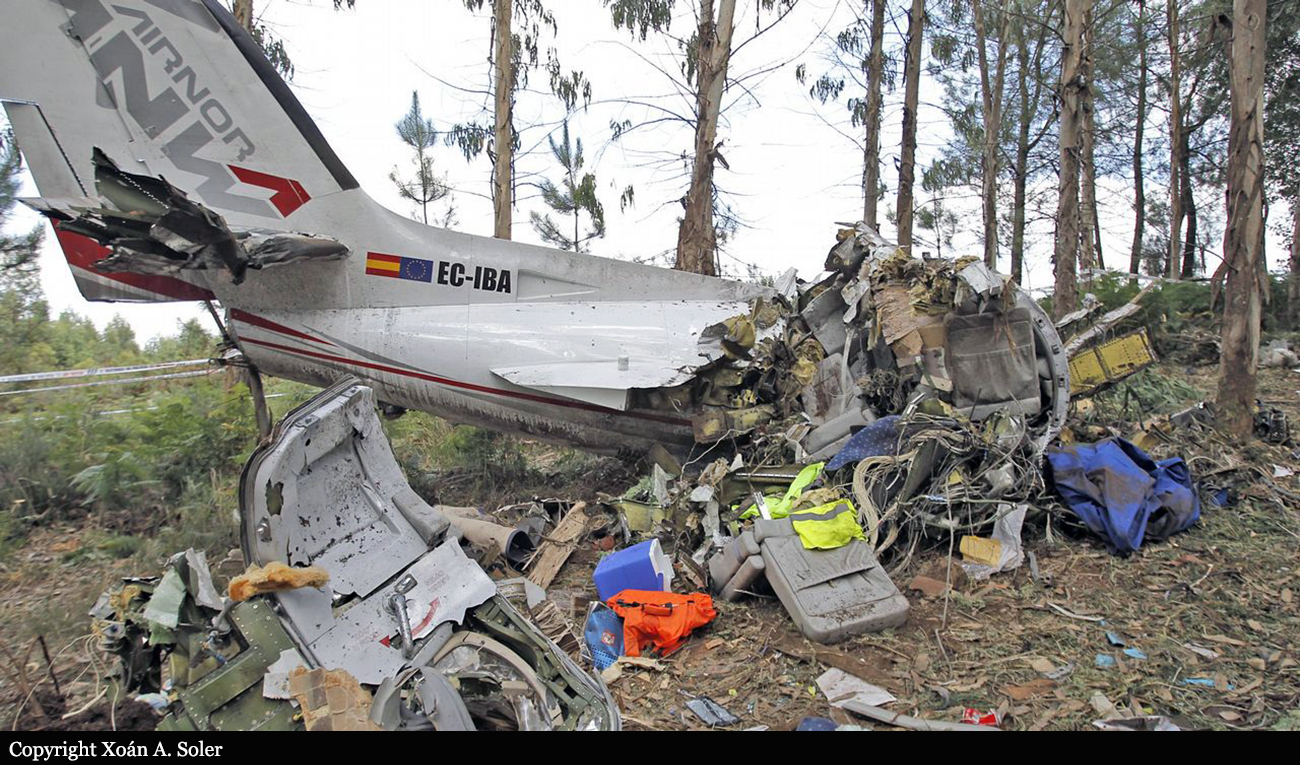
Crash of a Cessna 500 Citation I in Biggin Hill: 5 killed
Date & Time:
Mar 30, 2008 at 1438 LT
Registration:
VP-BGE
Survivors:
No
Schedule:
Biggin Hill – Pau
MSN:
500-0287
YOM:
1975
Crew on board:
2
Crew fatalities:
Pax on board:
3
Pax fatalities:
Other fatalities:
Total fatalities:
5
Captain / Total hours on type:
18.00
Copilot / Total hours on type:
70
Aircraft flight hours:
5844
Aircraft flight cycles:
5352
Circumstances:
Pilot B arrived at Biggin Hill Airport, Kent, at about 1100 hrs for the planned flight to Pau, France. At about 1130 hrs he helped tow the aircraft from its overnight parking position on the Southern Apron to a nearby handling agent whose services were being used for the flight. A member of staff employed by the handling agent saw Pilot B carry out what was believed to be an external pre-flight check of the aircraft. Pilot B also asked another member of staff to provide a print out of the weather information for the flight. Pilot A arrived at about 1145 hrs and joined Pilot B at the aircraft. Witnesses described nothing unusual in either pilots’ demeanour. Three passengers arrived at the handling agent at about 1300 hrs and waited in a lounge whilst their bags were taken to the aircraft and loaded into the baggage hold in the nose. A member of the handling agency, who later took the passengers to the aircraft, reported that Pilot B met them outside the aircraft. After they had all boarded, the agent heard Pilot B say that he would give them a safety brief. Pilot B then closed the aircraft door. Pilot A called for start at 1317 hrs. He called for taxi at 1320 hrs and the aircraft was cleared to taxi to the holding point A1. No one could be identified as a witness to the aircraft’s start or subsequent taxi to the holding point. At 1331 hrs ATC cleared the aircraft to line up on Runway 21 and at 1332 hrs cleared it to take off. Both clearances were acknowledged by Pilot A. The takeoff was observed by the tower controller who stated that everything appeared normal. No transmissions were made between the aircraft and ATC until one minute after takeoff when, at 1334 hrs, the following exchange was made. Numerous witnesses reported seeing the aircraft at around this time flying over a built-up area, about 2 nm north-north-east of Biggin Hill Airport, where it was observed flying low, passing over playing fields and nearby houses. Witnesses reported that the aircraft was maintaining a normal flying attitude with some reporting that the landing gear was up and others that it was down. Some described seeing it adopt a nose-high attitude and banking away from the houses just before it crashed. Some witnesses stated that there was no engine noise coming from the aircraft whilst others stated that they became aware of the aircraft as it flew low overhead due to the loud noise it was making, as if the engines were at high thrust. Two witnesses described hearing the aircraft make a pulsing, intermittent noise. The location of witnesses and the description of the aircraft noise they heard are also shown in Figure 1. Having flown over several houses at an extremely low height the aircraft’s left wing clipped a house which bordered a small area of woodland. The aircraft then impacted the ground between this and another house and caught fire. There were no injuries to anyone on the ground but all those on board the aircraft were fatally injured.
Probable cause:
The following contributory factors were identified:
1. It is probable that a mechanical failure within the air cycle machine caused the vibration which led to the crew attempting to return to the departure airfield.
2. A missing rivet head on the left engine fuel shut-off lever may have led to an inadvertent shut-down of that engine.
3. Approximately 70 seconds prior to impact neither engine was producing any thrust.
4. A relight attempt on the second engine was probably started before the relit first engine had reached idle speed, resulting in insufficient time for enough thrust to be developed to arrest the aircraft’s rate of descent before ground impact.
1. It is probable that a mechanical failure within the air cycle machine caused the vibration which led to the crew attempting to return to the departure airfield.
2. A missing rivet head on the left engine fuel shut-off lever may have led to an inadvertent shut-down of that engine.
3. Approximately 70 seconds prior to impact neither engine was producing any thrust.
4. A relight attempt on the second engine was probably started before the relit first engine had reached idle speed, resulting in insufficient time for enough thrust to be developed to arrest the aircraft’s rate of descent before ground impact.
Final Report:
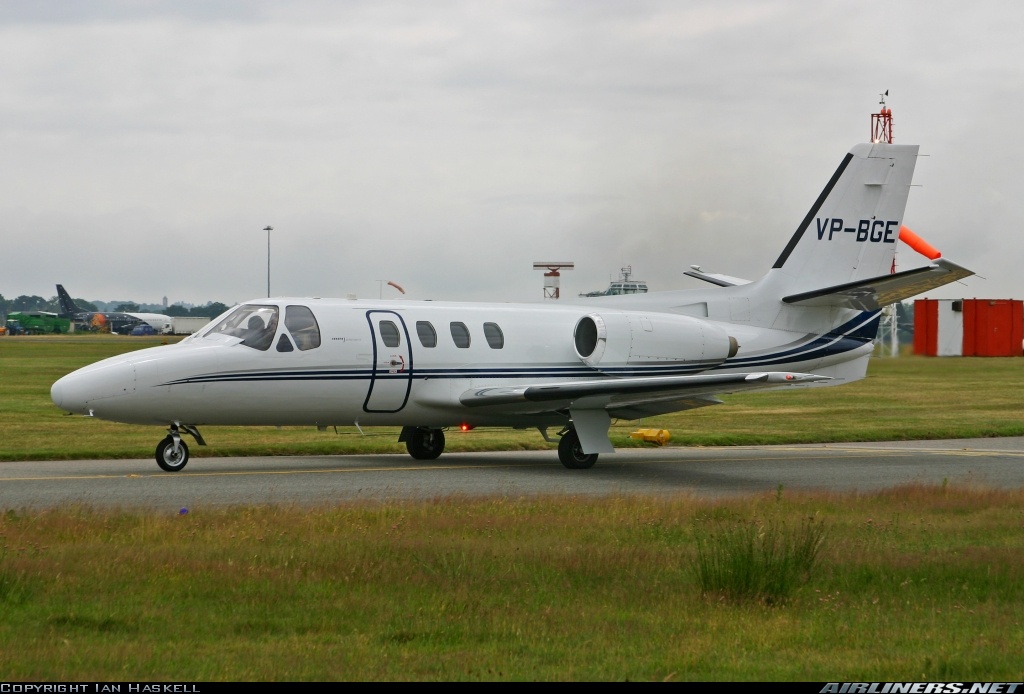
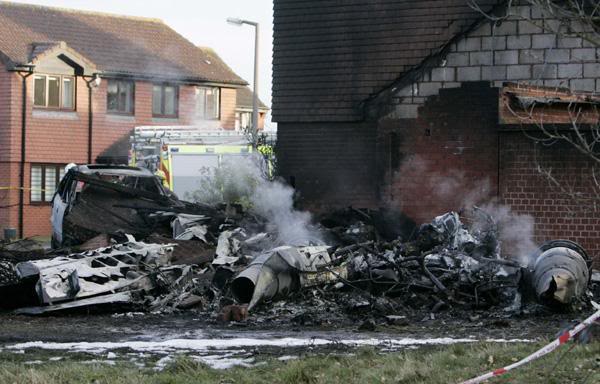

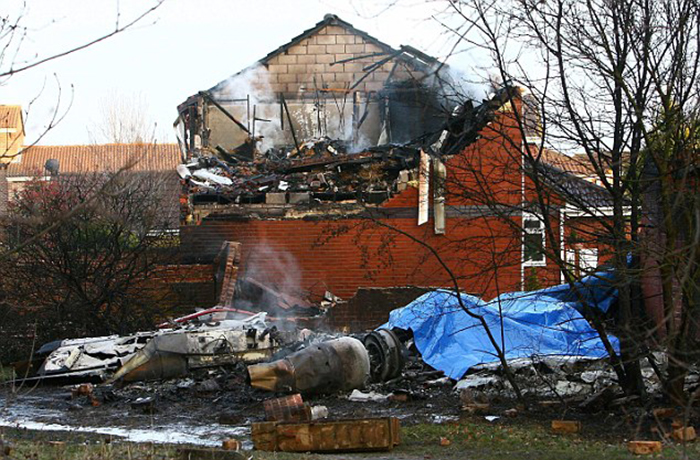

Crash of a Cessna 500 Citation I in Oklahoma City: 5 killed
Date & Time:
Mar 4, 2008 at 1515 LT
Registration:
N113SH
Survivors:
No
Schedule:
Oklahoma City - Mankato
MSN:
500-0285
YOM:
1975
Crew on board:
2
Crew fatalities:
Pax on board:
3
Pax fatalities:
Other fatalities:
Total fatalities:
5
Copilot / Total hours on type:
2
Aircraft flight hours:
6487
Circumstances:
On March 4, 2008, about 1515 central standard time, a Cessna 500, N113SH, registered to Southwest Orthopedic & Sports Medicine Clinic PC of Oklahoma City, Oklahoma, entered a steep descent and crashed about 2 minutes after takeoff from Wiley Post Airport (PWA) in Oklahoma City. None of the entities associated with the flight claimed to be its operator. The pilot, the second pilot, and the three passengers were killed, and the airplane was destroyed by impact forces and post crash fire. The flight was operated under 14 Code of Federal Regulations (CFR) Part 91 with an instrument flight rules flight plan filed. Visual meteorological conditions prevailed. The flight originated from the ramp of Interstate Helicopters (a 14 CFR Part 135 on demand helicopter operator at PWA) and was en route to Mankato Regional Airport, Mankato, Minnesota, carrying company executives who worked for United Engines and United Holdings, LLC.
Probable cause:
Airplane wing-structure damage sustained during impact with one or more large birds (American white pelicans), which resulted in a loss of control of the airplane.
Final Report:
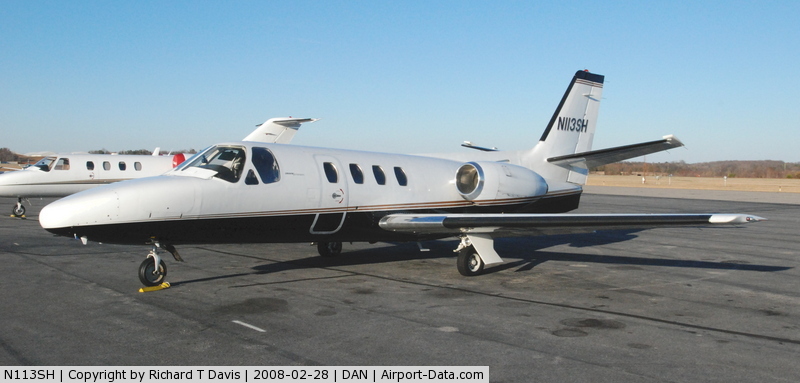

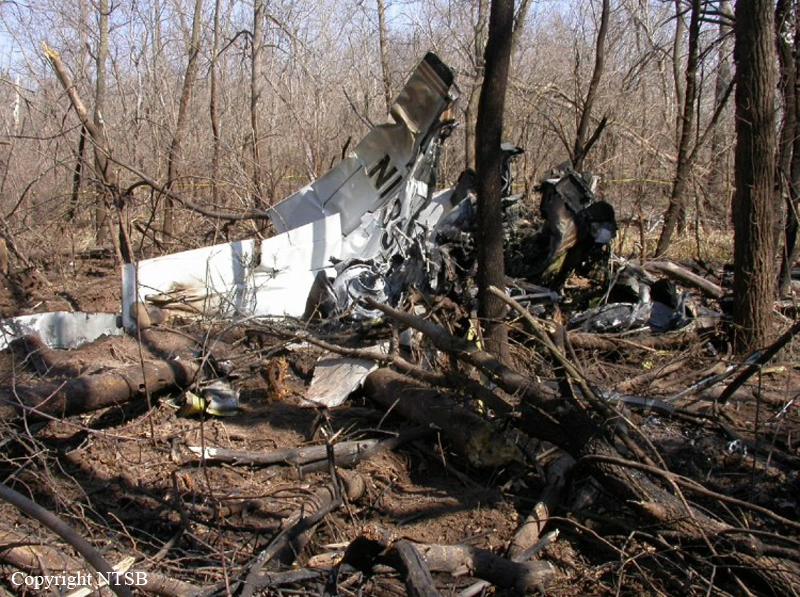
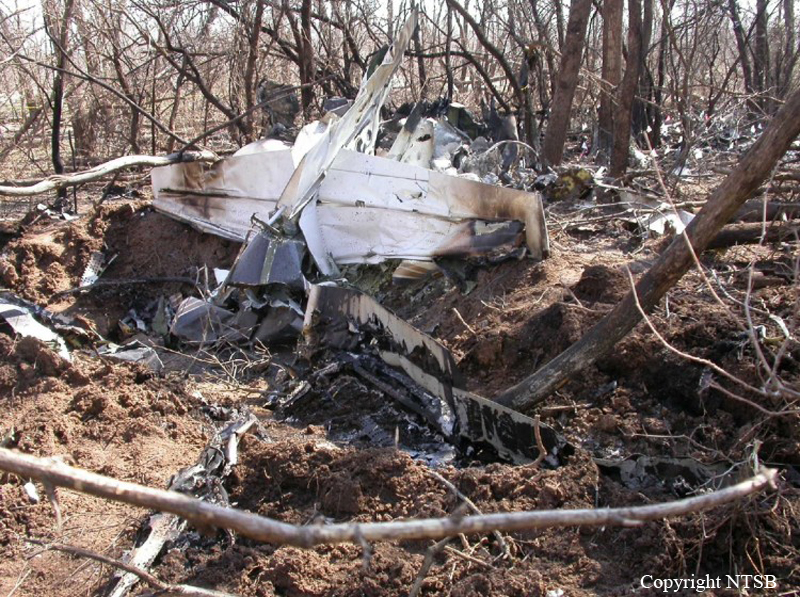
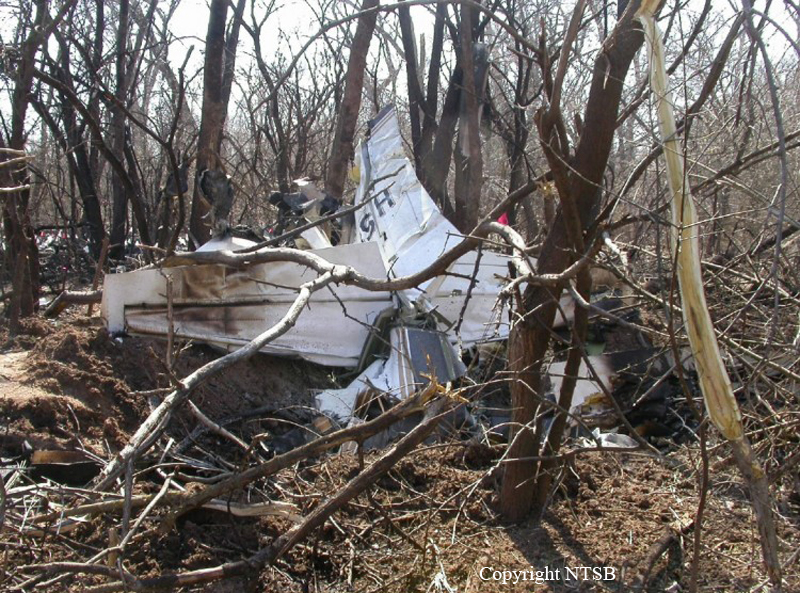
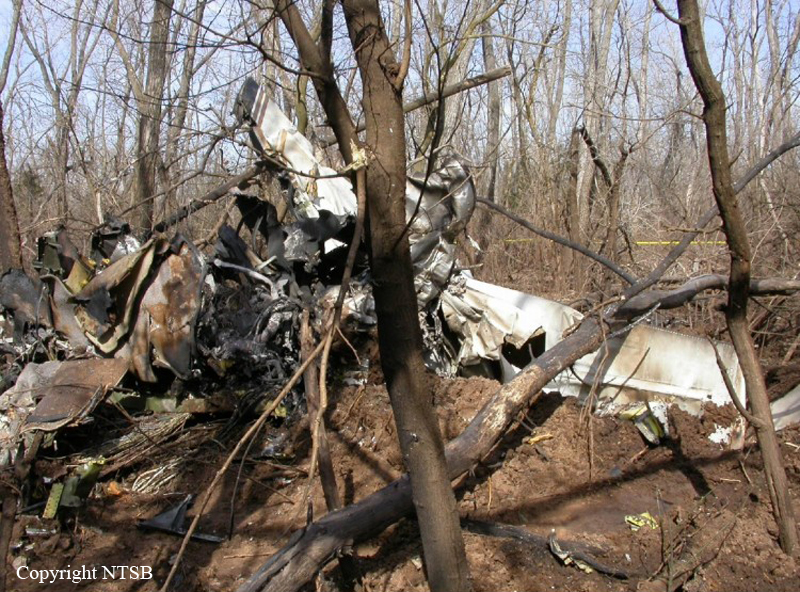
Crash of a Cessna 500 Citation I in Conway: 2 killed
Date & Time:
Jun 30, 2007 at 1450 LT
Registration:
N771HR
Survivors:
Yes
Schedule:
Wichita Falls – Conway
MSN:
500-0206
YOM:
1974
Crew on board:
1
Crew fatalities:
Pax on board:
1
Pax fatalities:
Other fatalities:
Total fatalities:
2
Aircraft flight hours:
4752
Circumstances:
The twin-engine turbojet airplane was attempting to land on a runway with standing water when the accident occurred. Before the landing attempt, the pilot was told that the runway was wet from a recent rain shower. Witnesses reported seeing the airplane on the runway traveling at a high speed and then increase engine power to abort the landing with about 1/4 of the runway remaining. The surviving passenger reported that the runway was "soaked and shiny with water." He stated that the airplane landed hard and fishtailed during the landing roll. During the aborted landing the airplane impacted a jet-blast deflector located off the departure end of the runway. The airplane then proceeded through the airport perimeter fence and impacted a residential structure before coming to a stop. The airplane and residential structure were destroyed during a postaccident fire. An examination of the airframe and engines did not reveal any anomalies associated with a preimpact failure or malfunction. The airplane was not equipped with thrust reversers or an anti-skid braking system. Radar track data analysis indicated that when the airplane was about 1/4 mile from the end of the runway it was approximately 16 knots above its target landing reference speed (Vref) and had a descent rate of 1,150 feet per minute. The runway was 4,875 feet long. The calculated landing distance for a runway with standing water is 4,789 feet.
Probable cause:
The pilot's failure to fly a stabilized approach and his delayed decision to abort the landing. Contributing to the accident was the standing water on the runway.
Final Report:


Crash of a Cessna 500 Citation in Greensboro
Date & Time:
Feb 1, 2006 at 1145 LT
Registration:
N814ER
Survivors:
Yes
Schedule:
Asheville - Greensboro
MSN:
500-0280
YOM:
1975
Crew on board:
2
Crew fatalities:
Pax on board:
0
Pax fatalities:
Other fatalities:
Total fatalities:
0
Captain / Total hours on type:
700.00
Copilot / Total hours on type:
1000
Aircraft flight hours:
12008
Circumstances:
The right main landing gear collapsed on landing. According to the flight crew, after departure they preceded to Mountain Air Airport, where they performed a "touch-and-go" landing. Upon raising the landing gear following the touch-and-go landing, they got an "unsafe gear" light. The crew stated they cycled the gear back down and got a "three green" normal indication. They cycled the gear back up and again got the "gear unsafe" light. They diverted to Greensboro, North Carolina, and upon landing in Greensboro the airplane's right main landing gear collapsed. After the accident, gear parts from the accident airplane were discovered on the runway at Mountain Air Airport. Metallurgical examination of the landing gear components revealed fractures consistent with overstress separation and there was no evidence of fatigue. Examination of the runway at Mountain Air Airport by an FAA Inspector showed evidence the accident airplane had touched down short of the runway.
Probable cause:
The pilot's misjudged distance/altitude that led to an undershoot and the pilot's failure to attain the proper touchdown point.
Final Report:
Crash of a Cessna 500 Citation I in Houston: 2 killed
Date & Time:
Nov 5, 2005 at 0958 LT
Registration:
N505K
Survivors:
No
Schedule:
Houston - Corpus Christi
MSN:
500-0004
YOM:
1972
Crew on board:
1
Crew fatalities:
Pax on board:
1
Pax fatalities:
Other fatalities:
Total fatalities:
2
Aircraft flight hours:
6230
Aircraft flight cycles:
6195
Circumstances:
The 4,100-hour commercial pilot lost directional control of the single-pilot twin-engine turbojet while taking off from runway 22 (7,602-feet long by 150-feet wide), and impacted the ground about 3,750 feet from the point of departure. Several witnesses reported that the airplane climbed to approximately 150 feet, rolled to the right, descended, and then struck the ground inverted. The weather was day VFR and the wind was reported from 170 degrees at 10 knots. Examination of the wreckage revealed that none of the main-entry door latching pins were in their fully locked position. The airplane's flight controls and engines did not disclose any mechanical discrepancies. The flaps were in the takeoff position and the control lock was unlocked. The pilot had not flown the airplane for over nine months because of extensive maintenance; the accident occurred on its first test flight out of maintenance. Since the pilots flight records were not found, it is unknown how much flight time the pilot had flown in the last nine months. The other airplane that the pilot owned was a Cessna 650, but witnesses stated that the pilot was only qualified as a co-pilot. Most of the maintenance records that were located were not completed; an approval for return-to-service was not found. Another airplane that had declared an emergency was on a 10-mile final when the tower cleared the accident airplane for takeoff, with no delay on the takeoff roll. No additional communication or distress calls were reported from the accident airplane. The airplane was not equipped with either a flight data recorder or a cockpit voice recorder. No anomalies were found on either engine that could have prevented normal engine operation.
Probable cause:
The pilot's failure to maintain directional control of the airplane resulting in an inadvertent stall/mush. Contributing factors were the unsecured passenger door and the pilot's diverted attention.
Final Report:

